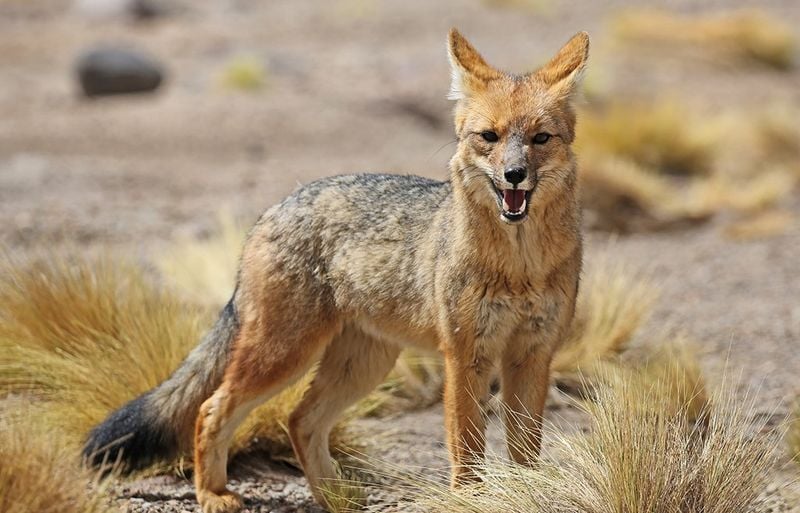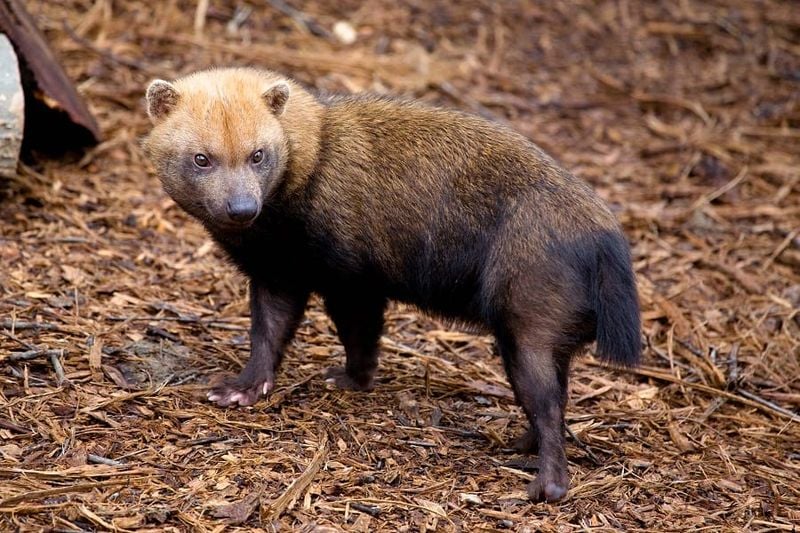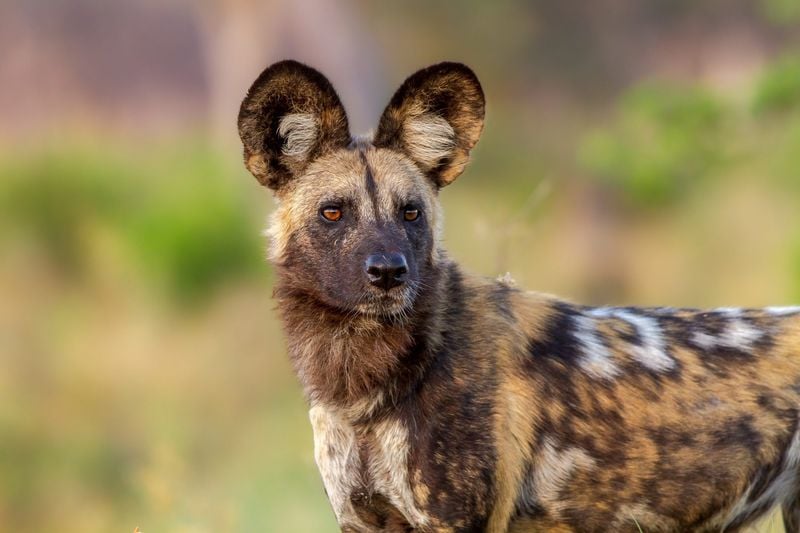10 Wild Dogs So Rare You Might Think They’re Myths
Hidden in remote corners of our planet live wild dog species so elusive that few people have ever seen them in person. These remarkable canids have adapted to survive in some of Earth’s most challenging environments—whether navigating the frostbitten highlands of Ethiopia, the shadowy rainforests of South America, or the rugged outcrops of New Guinea. Their appearances are fleeting, their populations often perilously low, and their habits largely cloaked in mystery.
Many of these wild dogs are evolutionary relics—species that have changed little over thousands of years, shaped by isolation and harsh conditions. Some, like the New Guinea Singing Dog, were once thought to be extinct in the wild until rediscovered in remote terrain. Others, like the Ethiopian wolf, are well-known to scientists yet desperately endangered due to habitat loss and disease.
Their rarity has elevated them to near-mythical status in the world of wildlife biology. They aren’t just rare—they’re vanishing. And unless more people learn about them, they may disappear before we fully understand what’s being lost.
From endangered icons to almost-unknown species, here are the 10 rarest wild dogs in the world—and why they matter.
10. The Ghost of the Andes: Andean Fox
Roaming the high-altitude grasslands of South America, the Andean Fox sports a distinctive reddish-gray coat that blends perfectly with its mountainous surroundings. Local shepherds whisper tales of these elusive creatures stealing lambs under cover of Andean fog.
Unlike typical foxes, these adaptable hunters can live at breathtaking elevations of up to 15,000 feet. Their thick fur and specialized lungs help them thrive where oxygen is scarce.
Also known as culpeos, these resourceful canids maintain large territories spanning several miles. Their opportunistic diet includes everything from rodents and rabbits to birds, lizards, and even fruit when prey is scarce.
9. Desert Phantom: Sechuran Fox
Small and sandy-colored, the Sechuran Fox vanishes like a mirage in the coastal deserts of Peru and Ecuador. Standing barely 12 inches tall, this miniature fox navigates a harsh landscape where water is precious and temperatures swing dramatically between day and night.
Found nowhere else on Earth, these rare canids have evolved remarkable water conservation abilities. They can extract nearly all the moisture they need from their prey, rarely needing to drink.
Scientists marvel at their diet—a surprising mix of insects, small rodents, and native fruits. Their population remains a mystery, with some experts fearing fewer than 15,000 remain in their shrinking habitat.
8. Brazil’s Vanishing Shadow: Hoary Fox
Moonlight reveals the silver-tipped fur of the Hoary Fox as it silently hunts through Brazil’s cerrado grasslands. This small, delicate canid weighs no more than a house cat but possesses remarkable hunting skills focused almost exclusively on termites and dung beetles.
Night reveals their true nature—swift, silent hunters with specialized teeth perfect for crunching insect exoskeletons. Unlike most wild dogs, meat makes up less than 10% of their diet.
Agricultural expansion threatens their specialized habitat, pushing these silver ghosts toward endangerment. Few Brazilians have glimpsed this native treasure, whose population has declined by over 20% in just three decades.
7. The Stilt-Legged Wonder: Maned Wolf
Neither wolf nor fox, the Maned Wolf stands alone on impossibly long legs that help it see above tall South American grasslands. Its striking appearance—fiery red coat, black mane, and deer-like limbs—has earned it the nickname “fox on stilts” among amazed observers.
Perhaps most surprising is its distinctive scent, often compared to cannabis, earning it the Brazilian nickname “wolf of the stinking fruit.” These gentle giants stand nearly three feet tall but weigh just 50 pounds.
Contrary to their name, these solitary creatures rarely howl, instead communicating through sharp barks and an unusual roar-bark when threatened. Their mysterious nature has made them symbols of the vanishing cerrado ecosystem.
6. Asia’s Forgotten Pack Hunter: Dhole
Whistling through Asian forests comes the dhole—a russet-colored wild dog with supernatural hunting abilities. These pack hunters coordinate with whistles instead of howls, bringing down prey many times their size through perfect teamwork.
Once found across Asia, fewer than 2,500 mature dholes remain in fragmented populations. Their athletic bodies can chase prey for miles, with powerful jaws delivering lightning-fast killing bites.
Unlike other wild dogs, dholes lack a fifth toe on their forelimbs and have one fewer molar in their lower jaw. Their pack structure fascinates scientists—they share food peacefully without the strict hierarchies seen in wolf packs, with females outnumbering males in most groups.
5. Rainforest Mystery: Bush Dog
Resembling a cross between an otter and a small bear, the secretive Bush Dog swims through South American rainforests with webbed feet and a waterproof coat. Their short legs and stocky bodies allow them to slip through dense undergrowth where other predators cannot follow.
Scientists estimate fewer than 10,000 remain, yet almost nothing is known about their natural behavior. Camera traps capture them so rarely that some researchers spend entire careers without a single sighting.
These social hunters live in family groups of up to 12 members, communicating underwater with special vocalizations. Their semi-aquatic lifestyle includes diving for fish and pursuing agoutis through flooded forest floors—a hunting style unique among wild canids.
4. The Dog That Sings: New Guinea Singing Dog
High in the remote mountains of Papua New Guinea lives a dog whose haunting “song” echoes through misty valleys. The New Guinea Singing Dog produces melodic howls unlike any other canid—complex vocalizations that rise and fall in pitch like eerie mountain music.
Thought extinct in the wild for decades, researchers rediscovered a small population in 2016 in the highlands at elevations above 14,000 feet. Their cat-like agility allows them to climb trees and navigate rocky terrain with remarkable grace.
Genetic studies reveal they may be among the most primitive dog forms alive today, possibly separated from other canids for over 18,000 years. Their flexible spine enables them to turn their heads 180 degrees, a feat impossible for domestic dogs.
3. Africa’s Wolf in the Highlands: Ethiopian Wolf
Fiery red against green highland meadows, the Ethiopian Wolf represents Africa’s most endangered carnivore. With fewer than 500 individuals remaining, these elegant hunters patrol the roof of Africa in search of giant mole rats and other highland rodents.
Evolution shaped these specialized hunters over millennia, giving them elongated muzzles and widely-spaced teeth perfect for snatching small prey from narrow burrows. Despite looking like foxes, genetic studies confirm they’re true wolves that evolved independently in African isolation.
Local shepherds call them “ky kebero”—red jackals—and ancient Ethiopian texts mention them as spiritual animals. Their social structure combines wolf-like pack living with solitary fox-like hunting, creating a unique behavioral pattern found nowhere else.
2. Island Survivor: Darwin’s Fox
Named after Charles Darwin who discovered it in 1834, this dark-furred forest ghost haunts the temperate rainforests of Chile. With fewer than 700 individuals remaining on Chiloé Island and a tiny mainland population, Darwin’s Fox represents one of Earth’s most endangered canids.
Their dark coloration—almost black with rusty highlights—helps them disappear into shadowy forest understories. Unlike most foxes, they’ve evolved to eat omnivorous diets heavy in fruits, insects, and fungi found on the forest floor.
Remarkably intelligent, these small foxes have developed unique hunting strategies for catching southern pudu (miniature deer) by stalking them along forest trails. Each fox maintains a territory of just one square mile—tiny compared to other wild canids.
1. The Painted Predator: African Wild Dog
Splashed with patches of black, white, and amber, no two African Wild Dogs share the same coat pattern. These social hunters maintain the highest successful kill rate of any large carnivore—over 80% compared to lions’ 30%—thanks to remarkable stamina that allows them to run for miles at 30mph.
Once numbering half a million across Africa, fewer than 6,600 remain today. Their complex social structure revolves around the entire pack caring for pups, with even adult males regurgitating food for youngsters.
Unlike other canids, they vote democratically on pack decisions through sneezing. Scientists have documented that when enough pack members sneeze, the group will move to hunt—perhaps the animal kingdom’s only true democracy.















